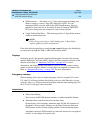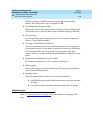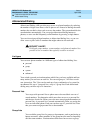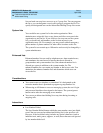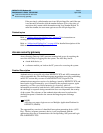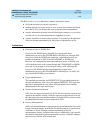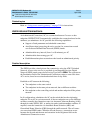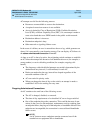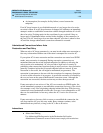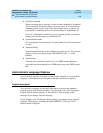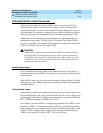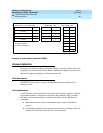
DEFINITY ECS Release 8.2
Administrator’s Guide
555-233-506
Issue 1
April 2000
Features and technical reference
1134Administered Connections
20
Access endpoints
Access endpoints are non-signaling trunk ports. They neither generate signaling to
the far-end of the trunk nor respond to signaling from the far-end. Designate an
access endpoint as the originating endpoint or destination endpoint in an AC.
Typical AC applications
The following are typical AC applications:
■ A local data endpoint connection to a local or remote-access endpoint.
Examples: a modular processor data module (MPDM) ACCUNET digital
service connecting to SDDN via an ISDN trunk-group DS1 port; an
MPDM ACCUNET digital service connecting to an ACCUNET Switched
56 Service via a DS1 port.
■ A local-access endpoint connecting to a local or remote-access endpoint.
Examples: a DSO cross-connect and a 4-wire leased-line modem to a
4-wire modem connection via an analog tie trunk.
■ A local data endpoint connecting to a local or remote data endpoint such as
a connection between two 3270 data modules.
NOTE:
The following guidelines do not include AAR and ARS, or GRS
administration information for routing AC calls over trunk groups.
See the respective feature elsewhere in this book for that information.
Establishing Administered Connections
The originating switch attempts to establish an AC only if one of the following
conditions exist:
■ AC is active.
■ AC is due to be active (either a permanent AC or time-of-day requirements
are satisfied if it is a scheduled AC).
■ Originating endpoint is in-service or idle state.
If the originating endpoint is not in service or is idle, no activity takes place for the
AC until the endpoint transitions to the desired state. The originating switch uses
the destination address to route the call to the desired endpoint. When the switch
establishes 2 or more ACs at the same time, the switch arranges the connections in
order of priority.



